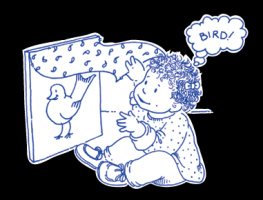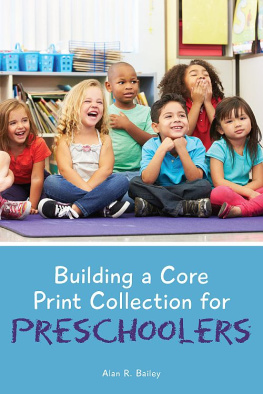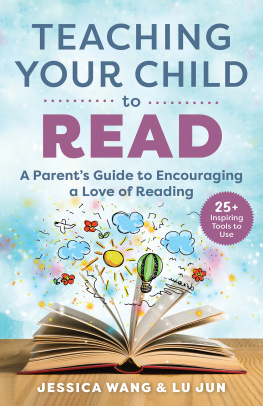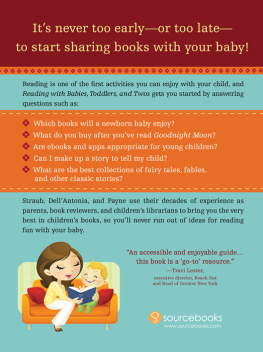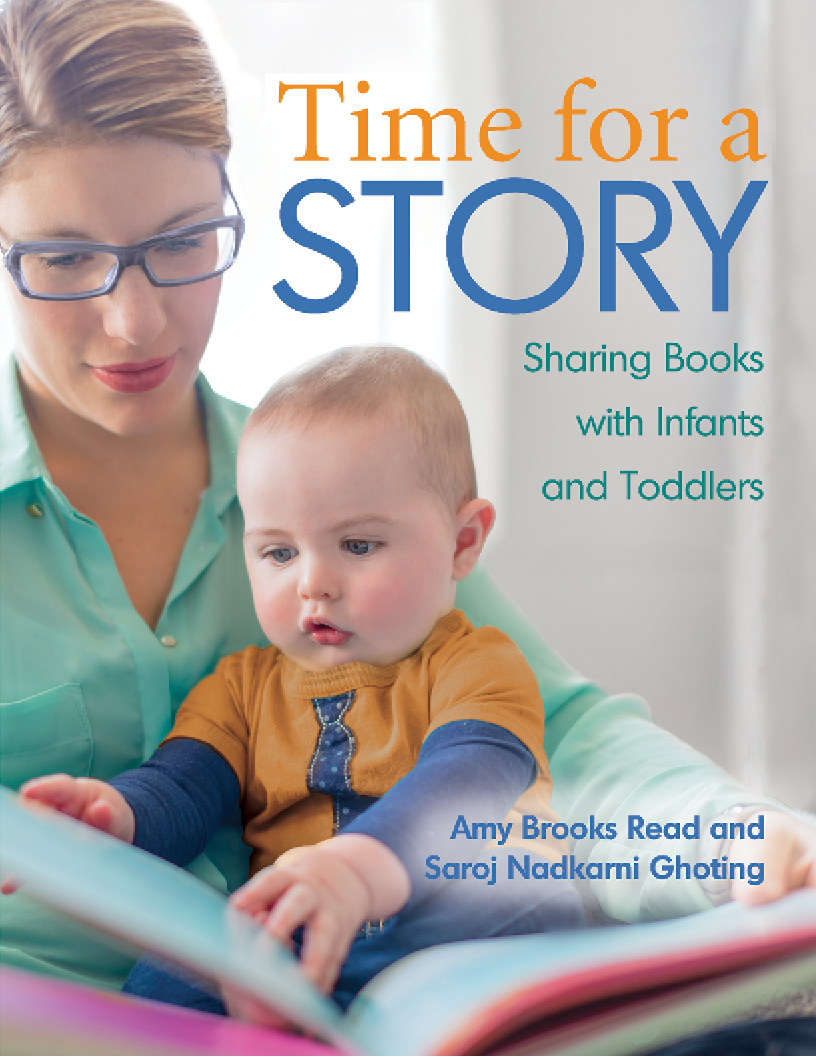Contents
Time for a
Sto ry
Sharing Books
with Infants
and Toddlers
Amy Brooks Read and
Saroj Nadkarni Ghoting

www.gryphonhouse.com
Copyright
2015 Amy Read and Saroj Ghoting
Published by Gryphon House, Inc.
P. O. Box 10, Lewisville, NC 27023
800.638.0928; 877.638.7576 (fax)
Visit us on the web at www.gryphonhouse.com.
All rights reserved. No part of this publication may be reproduced or transmitted in any form or by any means, electronic or technical, including photocopy, recording, or any information storage or retrieval system, without prior written permission of the publisher. Printed in USA. Every effort has been made to locate copyright and permission information.
Cover photograph courtesy of Shutterstock.com 2015.
Library of Congress Cataloging-in-Publication Data
The Cataloging-in-Publication Data is registered with the Library of Congress for
ISBN: 978-0-87659-657-9
Bulk Purchase
Gryphon House books are available for special premiums and sales promotions as well as for fund-raising use. Special editions or book excerpts also can be created to specifications. For details, call 800-638-0928.
Disclaimer
Gryphon House, Inc., cannot be held responsible for damage, mishap, or injury incurred during the use of or because of activities in this book. Appropriate and reasonable caution and adult supervision of children involved in activities and corresponding to the age and capability of each child involved are recommended at all times. Do not leave children unattended at any time. Observe safety and caution at all times.
Dedication
To Mike, Alden, and Hadyn,
Thanks for your patience. Yes, its done! I love you all.
A. B. R.
For all the dedicated early childhood educators who make a difference
in the lives of young children and their families every day.
S. N. G.
Introduction
Preparing a child for school success begins at birth. Yes, even that early they begin building skills that will prepare them for kindergarten. When a child enters an early childhood classroom as an infant or young toddler, she is beginning her journey toward kindergarten. In those few short years, every experience matters. As early childhood providers, we have a responsibility to provide high-quality care and education. Ensuring that childrens care is of the highest quality includes using early literacy (prereading) activities and experiences that support their growth and development, all day, every day.
Reading with infants and toddlers is a fundamental activity, which all children should experience. In child care, when you have a full class of infants and toddlers this can be demanding. Taking a book off the shelf and reading it is a fairly easy task. But, selecting the most appropriate book, reading it in a way that captures the childrens attention, emphasizing in playful ways the skills and components that children need to develop, and incorporating the practices that help build early literacy skills can be challenging. It takes thought, preparation,
and planning to make the most out of every experience a child has with a book. You may already be doing some of the techniques that we suggest, such as using voices for characters, making animal sounds, or singing songs. If so, great! We will offer more information about why each activity is developmentally appropriate and how it relates to building early literacy skills. This book has been developed to support early childhood professionals as well as parents and families with all the challenges of maximizing reading experiences with infants and toddlers to enhance their early literacy development.
The most important item or tool that a teacher or parent has in preparing children for later reading success is a book. With hundreds of thousands of childrens books published each year, how do you select the right ones? What should the books include? How many words should they have? What kinds of pictures should they have? This book is not a critical review of childrens books or an endorsement of any particular authors; it is a guide that covers different categories of books for infants and toddlers and explains how teachers and parents can use these books to help build the early literacy foundation that will take children from the infant and toddler years into preschool. Indeed, it is the way we use books with children that makes the difference in their early literacy development. The book is the tool, but it is you who makes a difference in childrens language development in using that tool.
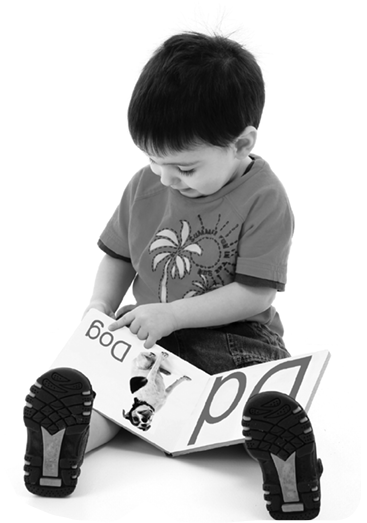
Chapter 1 explains how early literacy develops and how you can support young children as they develop the skills needed to learn to read. Chapters 2 through 6 focus on a particular type of book and how this type of book helps build on early literacy practices and components. The practices, components, and focus areas that are most closely tied to the type of book are included. The practice of writing is not specifically connected to any of the types of books but will be woven throughout all of the categories:
Interac tive Books
PracticePlay
ComponentsBackground Knowledge, Print Awareness, Letter Knowledge
FocusSensory-Motor Development, Object Permanence, I Can Do It
Song Books and Rhymes
PracticeSing
ComponentsPhonological Awareness, Vocabulary
FocusRhythm and Rhyme, Action Rhymes
Informational Books
PracticeTalk
ComponentsBackground Knowledge, Vocabulary, Letter Knowledge
FocusLearning about my World
Stories
PracticeRead
ComponentsBackground Knowledge, Print Awareness, Phonological
Awareness, Vocabulary
FocusCognitive Developm ent, Sequencing, Narrative Skills
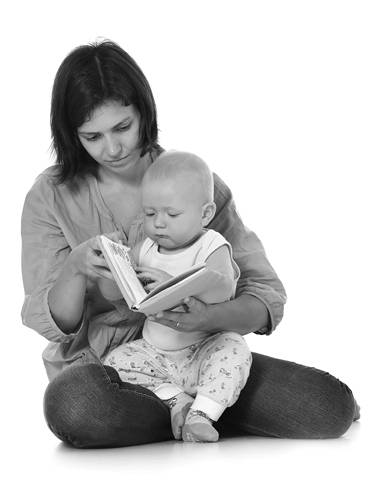
Exposing children to a variety of types and styles of books not only helps build a strong early literacy foundation it helps build their excitement and interest in reading. In the What You Can Do with _________ Books sections, we explore how a particular type of book addresses specific early literacy practices. We cover each practiceread, write, sing, talk, and playand the skill or component that is addressed. Suggestions for ways to connect with parents and families or share information with them are included with each practice.
We have included books that are good examples of particular categories. They are only examples; the tips and suggestions can be used with just about any book. Be creative. Use books that you and the children like. As long as everyone is having fun, you will be able to enhance your story time with early literacy practices and components. In each chapter, we discuss how you can emphasize the characteristics of a particular type of book even if you
do not have that specific title.
Did You Know?
We have included books that are good examples of particular categories. They are only examples; the tips and suggestions can be used with just about any book.
Each chapter includes sample book lists, which give a short summary or synopsis of the book and highlight features of the book. Following the
book lists are examples of how to use selected titles.



